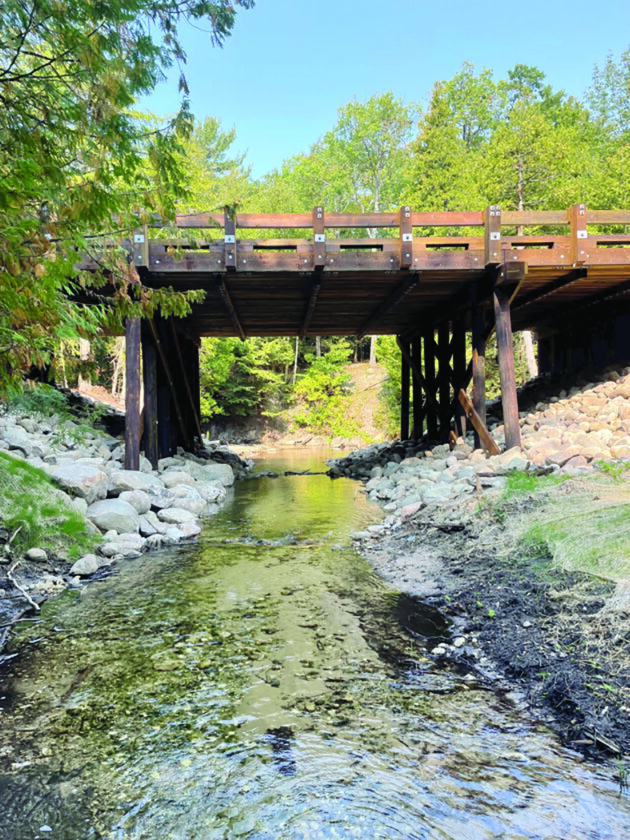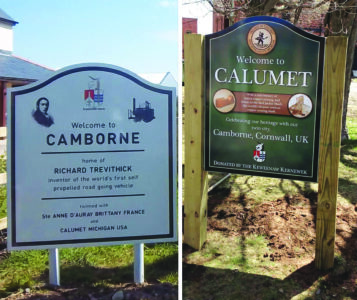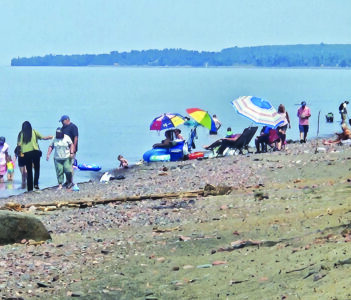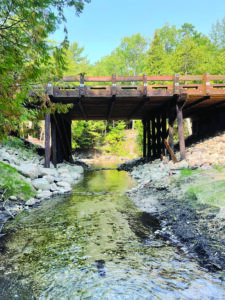DNR to remove 5 UP dams

Wycamp Creek Road-Stream Crossing in Emmet County was replaced with a new timber bridge in September, reconnecting 1.35 miles of stream for white and longnose suckers, culturally significant fish species for Little Traverse Bay Band of Odawa Indians. (Photo courtesy of the Little Traverse Bay Band of Odawa Indians)
MARQUETTE – The Michigan Department of Natural Resources, with help from many conservation partners, is halfway through completion of a $5 million grant project to remove 27 stream barriers, including 16 DNR-managed dams. Efforts to date have reconnected more than 140 miles of streams.
Funding for this work was awarded by the National Fish and Wildlife Foundation’s America’s Ecosystem Restoration Initiative (formerly the America the Beautiful Challenge), which seeks to conserve and restore aquatic and terrestrial ecosystems, improve resilience to flooding and other threats, and expand community access to nature.
The DNR was awarded grant funding in 2022, and work on the project began in June 2023. Since that time, the following components have been completed: Crawford County: removal of Hulbert Road Dam; Emmet County: replacement of 5 Mile Creek Road-stream crossing and Wycamp Creek Road-stream crossing; Jackson County: removal of Portage Creek Trout Pond Dam; Luce County: removal of Spring Creek Trout Pond Dam; Mackinac County: removal of McAlpine Trout Pond Dam (expected completion in September); Mecosta County: removal of Altona Dam;Oceana County: removal of Marshville Dam; and Oscoda County: removal of Mio Walleye Pond Dam (expected completion in September).
“Funding from this partnership helped us restore connectivity to two major fisheries (Five Mile and Wycamp creeks) for LTBB citizens,” said Samuel Day, Great Lakes fisheries research specialist at Little Traverse Bay Bands of Odawa Indians. “The new crossings make it easier for native fish like suckers to migrate from Lake Michigan to their spawning grounds and will help sustain these fisheries for generations to come.”
An additional 11 projects are slated for action in 2026. The outcomes from all of these projects will serve to address public safety, protect valuable natural resources, and improve the ability of the DNR to focus management efforts and resources on dams in places that provide high-quality resource benefits and public use.
Many of the removal projects that are called “dams” aren’t really serving as dams but are barriers that require removal for public safety and better fish movement upstream and downstream. The following four projects slated for removal are located in the channel but serve no useful purpose and prevent fish from moving upstream: Carr Creek Fish Barrier (Delta County), Big Trout Lake Fish Barrier (Marquette County), Buckhorn Creek Dam (Mecosta County) and East Branch Dam (Oscoda County).
An additional four projects are remnants of the state’s fish hatchery and production program. The structures are no longer needed for contemporary production, and their removal is necessary to restore stream banks and also to improve stream connectivity for fish. These project locations include Dana Lake Pike Marsh Dam (Delta County), Thompson Creek Blocking Weir (Schoolcraft County), Almena Hatchery Dams 1-5 and a diversion dam (Van Buren County) and Rapid River Pike Marsh structure (Delta County).
The availability of grant funding has enabled organizations working with the DNR on upcoming construction to pursue these high-priority projects. “The award of America the Beautiful funds has allowed Michigan Trout Unlimited to expedite the removal of two dams, with many more to come, providing invaluable benefit to coldwater streams in Michigan,” said Kristin Thomas, stream restoration director at Michigan Trout Unlimited.
“The Superior Watershed Partnership is pleased to be working with the Michigan DNR to remove three obsolete dams in the Upper Peninsula,” said the partnership’s senior planner, Geraldine Grant, referring to Big Trout Lake Fish Barrier, Carr Creek Fish Barrier and Dana Lake Pike Marsh dams. “Removal of these dams will benefit recreational users, address concerns with aging infrastructure, eliminate public safety risks, and improve river connectivity, aquatic organism passage and climate resiliency.”
Upon completion, nearly 200 upstream miles of Michigan rivers and streams will be reconnected, benefiting at-risk species like the eastern massasauga rattlesnake, pickerel frog, and fluted shell and elktoe freshwater mussels, along with countless other aquatic species.




